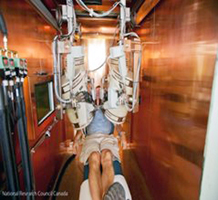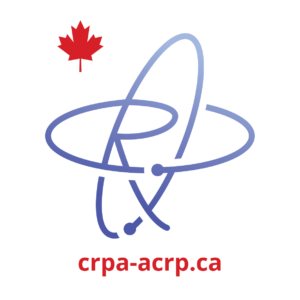Overview of the National Calibration Reference Centre’s Capabilities and Research Projects
The National Calibration Reference Center (NCRC) for Bioassay and In Vivo Monitoring was established in 1982 within Health Canada’s Radiation Protection Bureau. It improves workplace safety through testing that measures workers’ internal exposures to radiation.
NCRC provides performance testing programs for in vivo and in vitro bioassay. Clients include universities, hospitals, public utilities, and private firms. Their performance tests align with specifications of the Canadian Nuclear Safety Commission Regulatory Document, REGDOC-2.7.2, Dosimetry, Volume II: Technical and Management System Requirements for Dosimetry Services. NCRC is ISO 9001 registered.
Programs
Currently, NCRC provides eight bioassay performance testing programs on an annual basis.
|
In vitro programs:
|
 |
 |
|
In vivo programs:
|
 |
 |
For more information, see the Programs and Services section of the NCRC webpage.
Research in bioassay measurements
NCRC also participates in research projects on the accuracy of bioassay measurements. Topics include
- determination of factors that influence results,
- phantom design and fabrication, and
- methodology improvements.
We also collaborate with other national or international organizations such as the the European Radiation Dosimetry Group (EURADOS) and PROCORAD (an international network that provides its members with annual inter-laboratory comparisons).
In addition, the centre can provide individual monitoring using in vivo and in vitro bioassay measurements of people who may have been contaminated with radionuclides.
 |
 |
 |
NCRC is using techniques including MCNP (Monte Carlo N-Particle) simulations to develop or improve measurement.
Latest developments
The latest innovation is using 3D printing technology to produce new, in-house anthropomorphic phantoms. For example, this technology was used to redesign the NCRC thyroid and lung phantoms for our performance test programs.
 |
 |
 |
3D printed neck, thyroid inserts, and lung sets
 Marilyn Tremblay
Marilyn Tremblay
Marilyn is the head of the National Calibration Reference Centre for Bioassay and In Vivo Monitoring. She has been with Health Canada at the Radiation Protection Bureau for just over 13 years. She has a master’s degree in nuclear engineering from Polytechnique Montréal. Marilyn lives in Ottawa with her husband and two young boys.
Do you want to read more articles like this?
The Bulletin is published by the Canadian Radiation Protection Association (CRPA). It’s a must-read publication for radiation protection professionals in Canada. The editorial content delivers the insights, information, advice, and valuable solutions that radiation protection professionals need to stay at the forefront of their profession.
Sign up today and we’ll send you an email each time a new edition goes live. In between issues, check back often for updates and new articles.
Don’t miss an issue. Subscribe now!
Subscribe

 Marilyn Tremblay
Marilyn Tremblay
